John Madden
JOHN ALFRED MADDEN
This Profile is about SQN LDR John Alfred Madden, who was known as “Jack”. It follows his life between the ages of 19 and 27, from when he attained his Civilian Pilots Licence, to when he volunteered, served, and completed his service with the R.A.A.F. He wanted to make a difference in volunteering to fight for his country. He did so, with pride.
The information is based on records from his Civilian and RAAF Log books, medical records, and the National Archives. Unfortunately, there are only a handful of photos of “Jack”. There are many photos of the actual aircraft he flew which were documented in his Log Books.
John Alfred Madden, otherwise known as “Jack” was born on the 4/4/1919, at Eastwood in Sydney. At 18 he was apprenticed as a mechanic at Airflite at Mascot Airfield. Jack had a love of the air and at the age of 19 on the 30th January, 1938, he began learning to fly and held his civilian pilots licence by the time he was almost 20. He continued flying civilian aircraft for 21 months until October,1939, when he applied to join the RAAF, at the age of almost 21.
He flew several types of aircraft while flying as a civilian. They included; Tiger Moth, Leopard Moth, Major Moth, Ryan, Avro Avian. The Avro Avian VH-UHC Jack’s mother bought for him to fly was leased to the Warren Penny School of Flying before the war. As soon as the plane was purchased, Jack spent all his free time flying it when it wasn’t being used for instruction by the school.
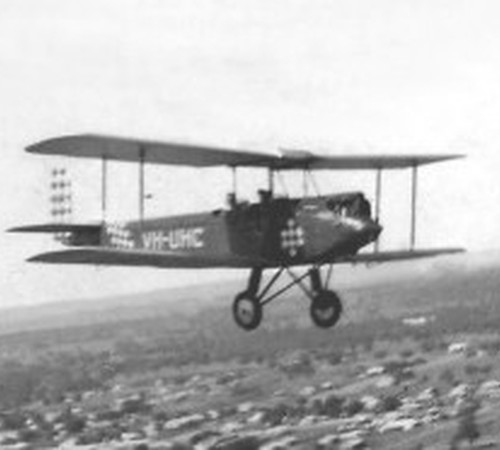
Before the purchase of the Avro Avian and while flying as a civilian according to his log books, Jack flew extensively, the Tiger Moth VH-UVZ, that is currently held at Temora Aviation Museum.
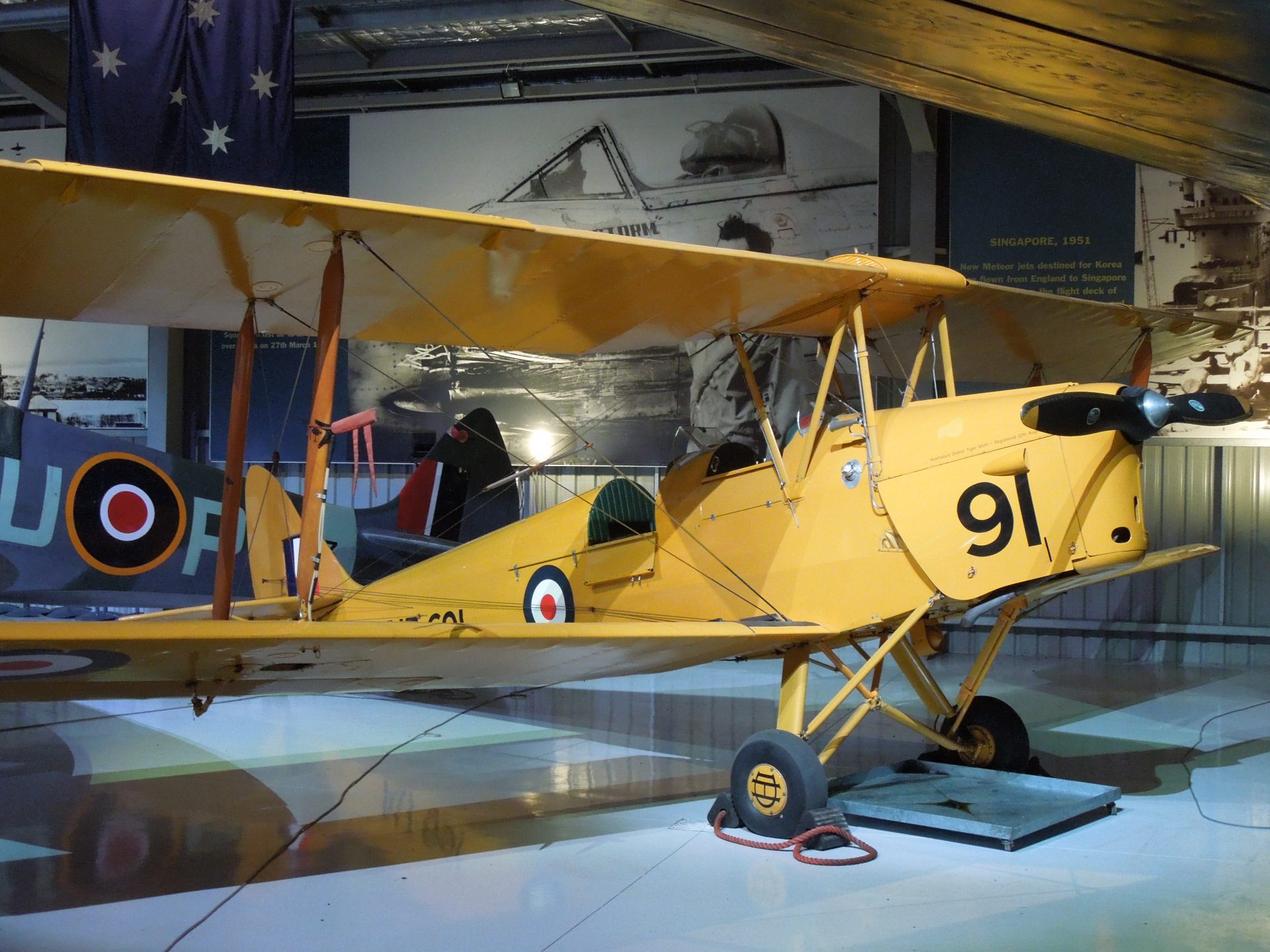
John Madden Flying History (30.1 MB) (click to watch)
When War broke out, Jack was keen to perform as a pilot and fight for his country. At the age of 21 and on the 5th of February 1940, he volunteered and was accepted into the RAAF and began his training as a Cadet at Mascot. Due to his flying experience, Jack progressed through his training quickly and soon became an Instructor. On the 6th September 1940, Jack graduated as a Pilot Officer.
Interestingly, two notable instructors and COs that signed off on his training and other operations were; Air Marshal, Sir Charles Read. KBE, CB, DFC, AFC. and SQNLDR. Wilbur Wackett.
In addition, Jack eventually gave instruction to SQNLDR B. F. Rose. D.F.C. for his “conversion to Beaufighters” while SQNLDR Rose was temporary CO of 31 Squadron at Wagga Wagga in 1942.
Jacks’ training involved being posted to various other locations to learn such things as, navigating, bombing & gunnery. After 7 months of initial training he completed his “conversion course” on Fairey Battle Aircraft, and on the 17th of September 1940, began life as an instructor between Camden and Evans Head Flying Training Schools. On the 21st January 1941, he was promoted to the rank of Flying Officer.
Jack had been in training for 2 years and 9 months and had completed several postings whereupon he received and gave instruction on various types of aircraft.
His postings included such places as; Richmond, Point Cook, Camden, Evans Head, and Tamworth. After finishing at Tamworth, he was posted on the 23rd of August 1942 back to the newly formed 31 SQN at Forest Hill, Wagga Wagga, where he performed his conversion course on Beaufighters and then gave instruction to others on the Beaufighter.
Jacks graduation photo Wagga, circa September 1942
Jack is seated first row on left sitting. Interesting to note that the plaque in the photo contained a picture of Hitler surrounded by a “Dunny seat” and the pull chain was draped around that. Help with identifying any of the personnel in the photo would be most appreciated
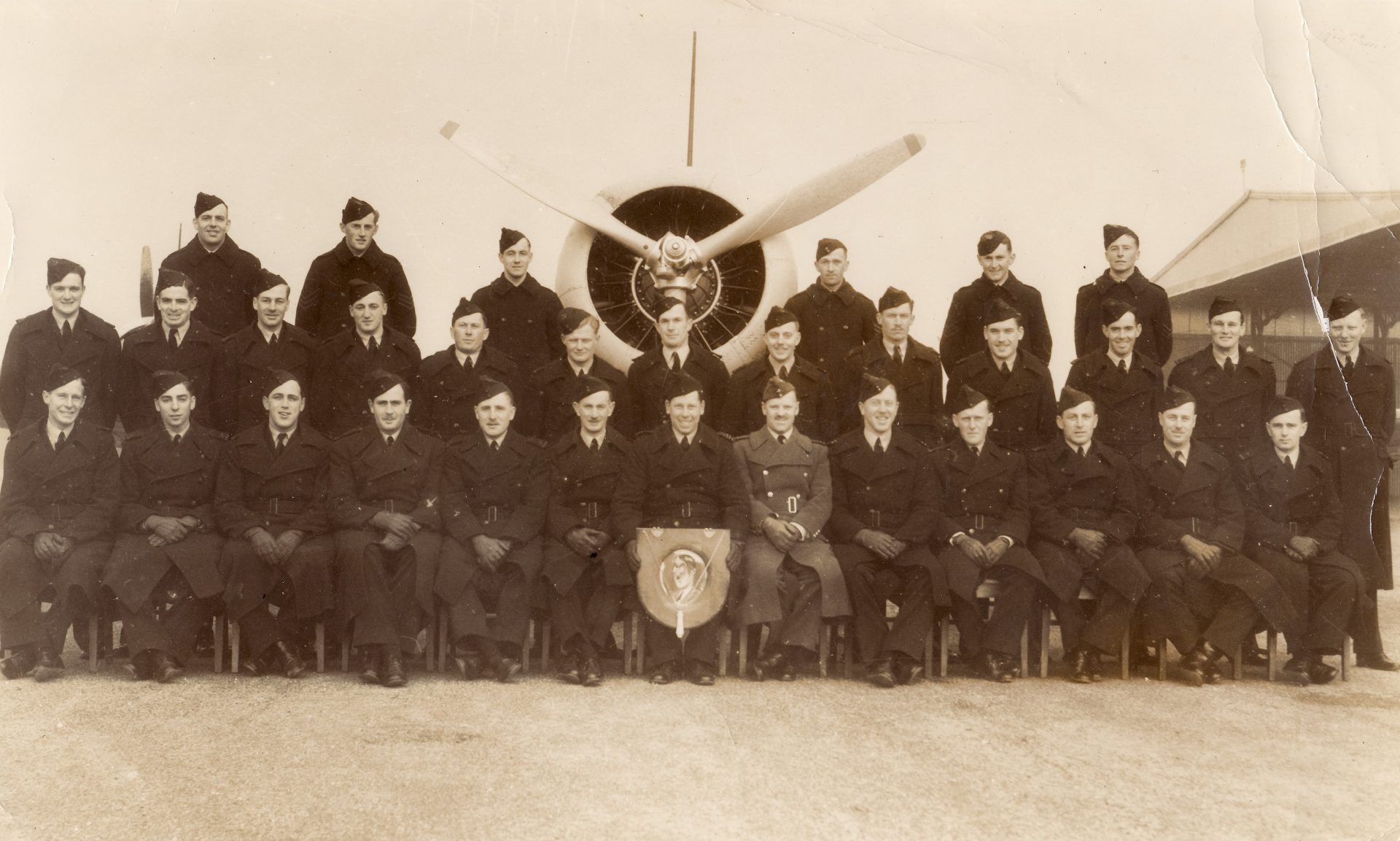
These men thought at the time that they were going off to fight Hitler. Little did they realise they would be fighting the Japanese. Soon after this photo was taken, he was then posted to the new Coomalie Creek Airfield in the Northern Territory.
There were two main flying groups that were stationed at Coomalie Airfield in its early days. They were 31 SQN, and No 1 Photographic Reconnaissance Unit (renamed 87 SQN). 87 PRU SQN, flew Wirraways, Buffalos, Lightnings, Lancers and Mosquitoes, and 31 SQN flew Beaufighters.
“Coomalie Charlie’s Commandos” is a book written about the initial intake of Airmen in 31 SQN and Coomalie by Kenneth Macdonald, who was also a founding member of the SQN. It is about SQNLDR Charles Read who commanded the first intake, or group of 31 Squadron, the pilots, navigators, groundsmen, medical teams, and other support members, when they were stationed at Coomalie Creek in the Northern Territory from 1942, hence the name, Coomalie Charlie’s Commandos.
The men and women stationed at Coomalie Creek were in a constant state of anxiety with the threat of the enemy ever present. Apart from “taking the war to the enemy” on a daily basis, the Japanese bombed and strafed Coomalie Airfield a total of 5 times during the Squadrons’ stay there.
Jack continued at Coomalie Creek until 15th May 1943 when he completed his tour of duty with 31 Squadron.
After leaving in May 1943, Jack went on to complete more than 20 postings and attachments at various Squadron locations and headquarters around Australia, These included; Townsville, Kingaroy, Sydney, Richmond, Amberley, Thursday Island, Archerfield, and New Guinea.
During his many postings, Jack spent his service time instructing new pilots, test flying aircraft after repairs by mechanics, ferrying aircraft over the continent, evacuating the wounded from New Guinea in the Air Ambulance Squadron, and performing duties generally associated with the organization and planning of air missions. He spent some time as an Instructor, regrading other instructors.
Jack was promoted to the Rank of Squadron Leader on the 1st July 1944.
DURING HIS FLYING CAREER, JACK FLEW AN AMAZING 262 INDIVIDUAL AIRCRAFT. In fact, there are so many that there is an aircraft he flew in almost every aircraft museum in Australia.
The type of aircraft he flew is listed below. Beside each is the amount of different planes he flew of that type:
- AIRSPEED OXFORD – 4

- AVRO ANSON – 18

- AVRO CADET – 28

- BEAUFIGHTER – 16

- BEAUFORT BOMBER – 8

- CAC WACKETT TRAINER – 4

- CATALINA – 1
- CESSNA AIRMASTER C-34 – 1

- DOUGLAS C-47 DAKOTA – 4
- DOUGLAS 2½ (C38) – 1
- DOUGLAS DC3 – 1

- DRAGON DH-84 – 6

- DRAGON DH-86 – 1

- FAIRCHILD – 1

- FAIREY BATTLE – 28

- FOX MOTH – 3
- MOTH SERIES DH-60 – 7
- HUDSON 111 – 4

- HURRICANE – 1 (V7476)

- KITTYHAWK – 17

- LEOPARD MOTH – 2
- LIBERATOR – 1
- LINK TRAINERS – 3
- LODESTAR – 1
- MOTH MINOR – 2
- NORSEMAN NOORDUYN – 1
- RYAN – 1

- SPITFIRE – 1
- TIGER MOTH – 9
- WIRRAWAY – 87

In the above list, Jack flew the only Hurricane that was given the RAAF for demonstration purposes.
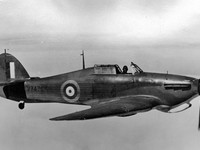
He flew it on 4 seperate occasions with a total of 3½ hours of flying.
This aircraft was also used for testing of a new anti-gravity or pressure suit that was being developed by Prof’ Frank Cotton of Sydney University.
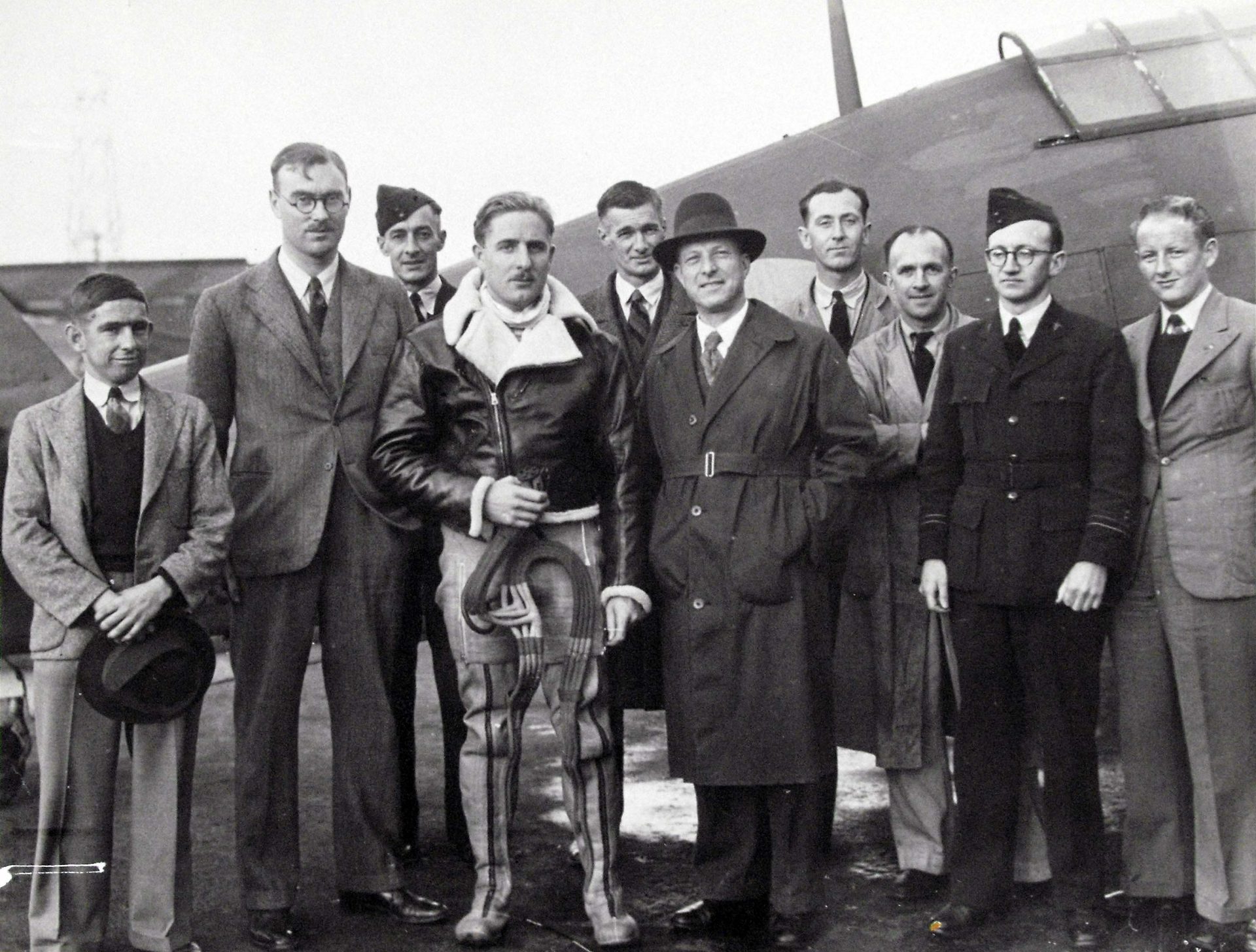
Prof Cotton and and the “anti-gravity” suit
Prof Cotton 2nd from left. Jack had also participated in testing of the suit and in doing so was injured as a result of an accident in the Centrifugal machine that Prof’ Cotton had built at Sydney University. This led to John being hospitalised for 6 weeks. His injury following him throughout the rest of his life .
In August 1946 Jack was posted to Bradfield Park whereupon he had completed his voluntary term “for the duration of the war- plus 12 months” and was then placed “on demobilisation”, the term used for discharge.

